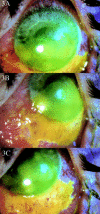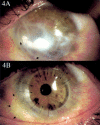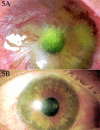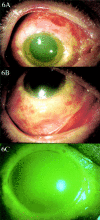A new classification of ocular surface burns
- PMID: 11673310
- PMCID: PMC1723789
- DOI: 10.1136/bjo.85.11.1379
A new classification of ocular surface burns
Figures







Comment in
-
Modification of classification of ocular chemical injuries.Br J Ophthalmol. 2004 Oct;88(10):1353-4; author reply 1354-5. doi: 10.1136/bjo.2004.046797/047308. Br J Ophthalmol. 2004. PMID: 15377570 Free PMC article. No abstract available.
References
Publication types
MeSH terms
LinkOut - more resources
Full Text Sources
Other Literature Sources
